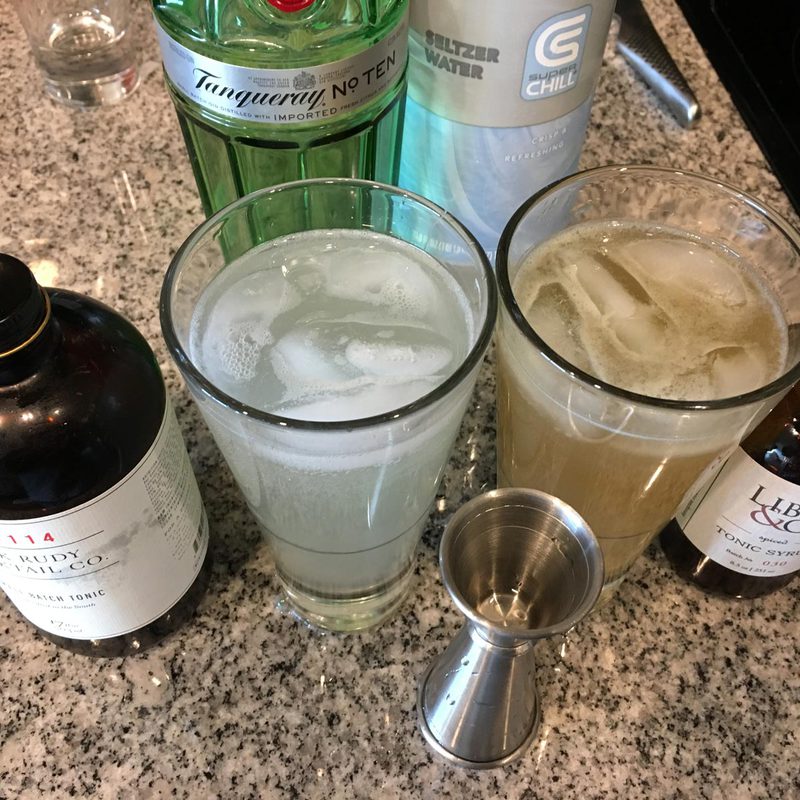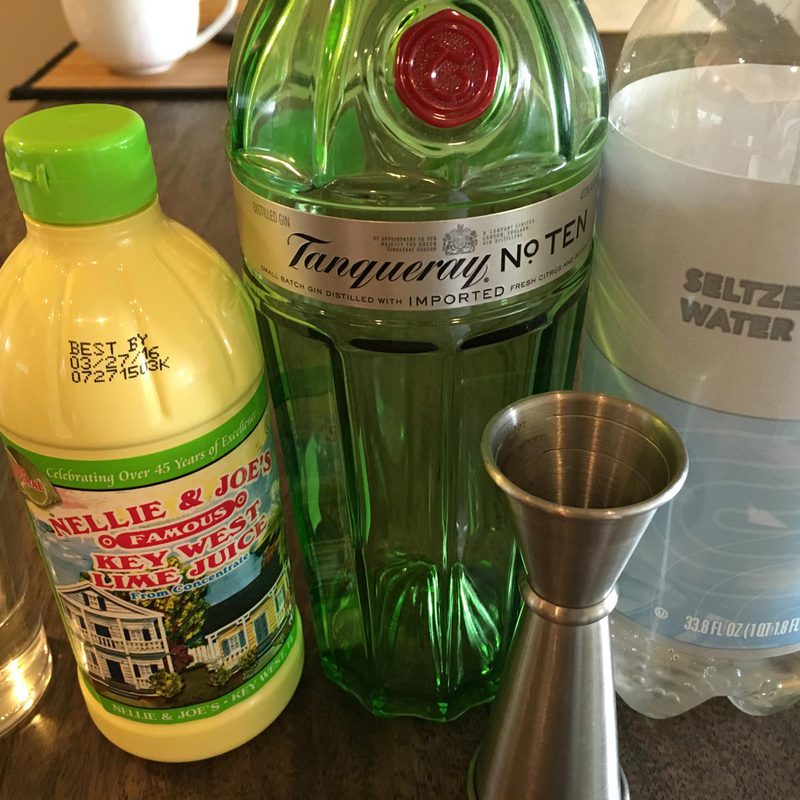Gin and tonic is one of our favorite cocktails. It is actually one of the cocktails we first bonded over when we started going out (we were on a ski trip) and we would take turns mixing gin and tonics at the end of the day, depending on who made it down the hill last.
We tend to shy away from mainstream bottled tonic water (e.g. Schweppes, Seagram’s, Canada Dry) because it’s too sweet for us. Some people dislike their use of HFCS, but even naturally sweetened tonics generally aren’t dry enough for our tastes.
We also avoid other popular options like Q Tonic because they are considerably more expensive than using plain seltzer water and adding syrup, and less space-efficient.
The alternative of course is tonic syrup. We’ve had a couple different bottles of tonic syrup lying around, but hadn’t yet done a tasting. Until today.
Facing off in this blog post we have two different small-batch tonic syrups:
Preparation
To compare we mixed them each into an otherwise identical gin and tonic.
- 2 oz Tanqueray Ten gin
- 0.5 oz Nellie and Joe’s Key West Lime Juice (while natural limes are preferable, we cannot guarantee consistency as easily)
- 4 ice cubes
- topped up with seltzer water in a Collins glass
- 0.75 oz of the respective tonic syrup
Contender 1: Liber & Co
The first thing you notice is that the Liber & Co tonic syrup makes a significantly darker cocktail. Were you handed this in a bar, you wouldn’t think it was a gin and tonic.
The nose is strong and sweet, smelling of pineapple or mango. A very attractive scent.
A glance at the ingredients of the syrup shows agave nectar and then cinchona bark.
Unfortunately the reliance on agave as the foremost ingredient comes through in the cocktail for us. It is a quite sweet gin and tonic. There is a disappointing absence of bitterness and the distinct tonic flavor fails to come through. Instead we have a very pleasant, sweet, citrusy flavor. The cinchona bark lends a hint of bitterness, but not the usual quinine punch that is characteristic of the cocktail.
The syrup itself is very strong, and risks overpowering the gin itself. We can account for this though - next time I’d mix a considerably higher amount of gin to make sure it doesn’t get lost. Or perhaps I would mix a different spirit entirely. I can see this being spectacular with a tropical spirit like rum or tequila. The sweet, citrusy notes and very subtle bitterness might find a happier home there.
Contender 2: Jack Rudy
The Jack Rudy tonic water is clear and pale. On the nose, you mostly just get the gin and lime. The syrup itself doesn’t seem present in the nose, and you find yourself wondering (especially after the Liber & Co) if you didn’t maybe forget the syrup.
On the first taste though, the back of your tongue is hit by the quinine bitterness, and you can be sure you’ve got tonic in there after all.
The flavor is still subtle. The gin is allowed to shine, and the lime brightens and adds an easy drinkability. The bitterness is light and pleasant. There is very little sweetness, with most of the sweetness seemingly coming from the key lime juice. Unsurprisingly a glance at the ingredients show us that the top ingredient is quinine.
Verdict
Neither is a bad cocktail, but ultimately we’d reach for the Jack Rudy every time. It provides exactly what a tonic should in our opinion - quinine bitterness rather than being a significant flavor component in and of itself. And there is very little sweetness which suits our tastes.
The Liber certainly has a nicer nose, but the drink almost becomes something different entirely. It’s a nice drink, but it isn’t a gin and tonic.
I think we’ll consign the Liber to citrusy tropical cocktails, and hang on to the Jack Rudy for G&T.

